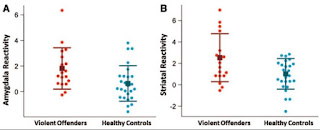Biomedical Science and Research Journals | Mindset Kinetics and Crime Behavior- Quantitative Methods? A New Forensic Quantitative Approach. How Biochemistry, Toxicology, Imaging Principle can Help in Jurisdictional Settings
In some non-voluntary crime is crucial verify the amygdala and limbic
system physio-pathology of human responsible of the facts under a
Jurisdictional contest. But is relevant to verify this condition in
really objective and instrumental way. Many other human
physio-pathological
conditions are deeply investigated using biochemical or imaging
technique: today many organ and system are currently evaluated with high
number
of biomedical, instrumental or imaging test also In basal or stressing
condition. The objective setting of amygdala and limbic system must be
added
in jurisdictional procedure not as a prove but an additional information
to be correctly evaluated. In this work after a literature evaluation
some
global conclusion are produced.
Often is possible to say: One second after often is too much.
In many crime situation mindset kinetics of amygdala, limbic
system, thalamus is a crucial aspect to be adequately considered in
jurisdictional settings. This neuronal system is involved in manage
of anger, impulsivity, aggressiveness, fear and other emotional
response to various kind of stimulus. In article “Amygdala Hijack
and the Fight or Flight Response “By Arlin Cuncic 2018: “The term
“amygdala hijack” was introduced by the psychologist D. Goleman.
He used the term to recognize that although we have evolved as
humans, we retain an ancient structure in our brain that is designed
to respond swiftly to a threat. While at one time this was designed to protect us, it can
interfere with our functioning in the modern world where threats
are often more subtle in nature. The amygdala is involved in the
brain fear circuit, responsible for the fight-or-flight response that
causes to respond to threats.The amygdala is responsible for deciding what memories are
stored and where they are stored. The level of emotion that is
attached to a memory determines where it is stored in the CNS
To view fulltext of article:https://biomedgrid.com/fulltext/volume2/mindset-kinetics-and-crime-behavior-quantitative-methods-a-new-forensic-quantitative-approach.000563.php
For More information: biomedical open access Journals: https://biomedgrid.com/index.p
Amercan journal of biomedical science


Comments
Post a Comment